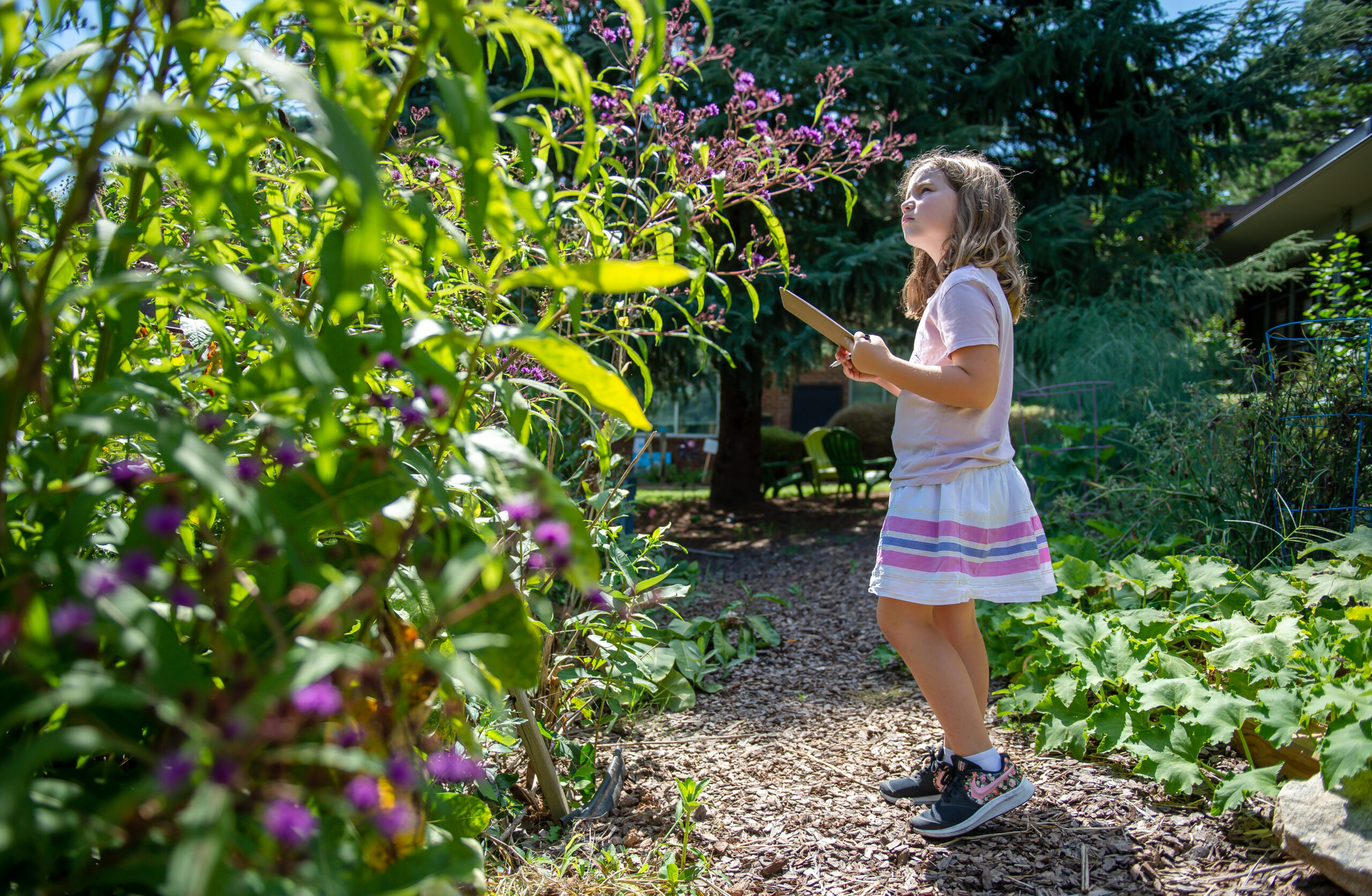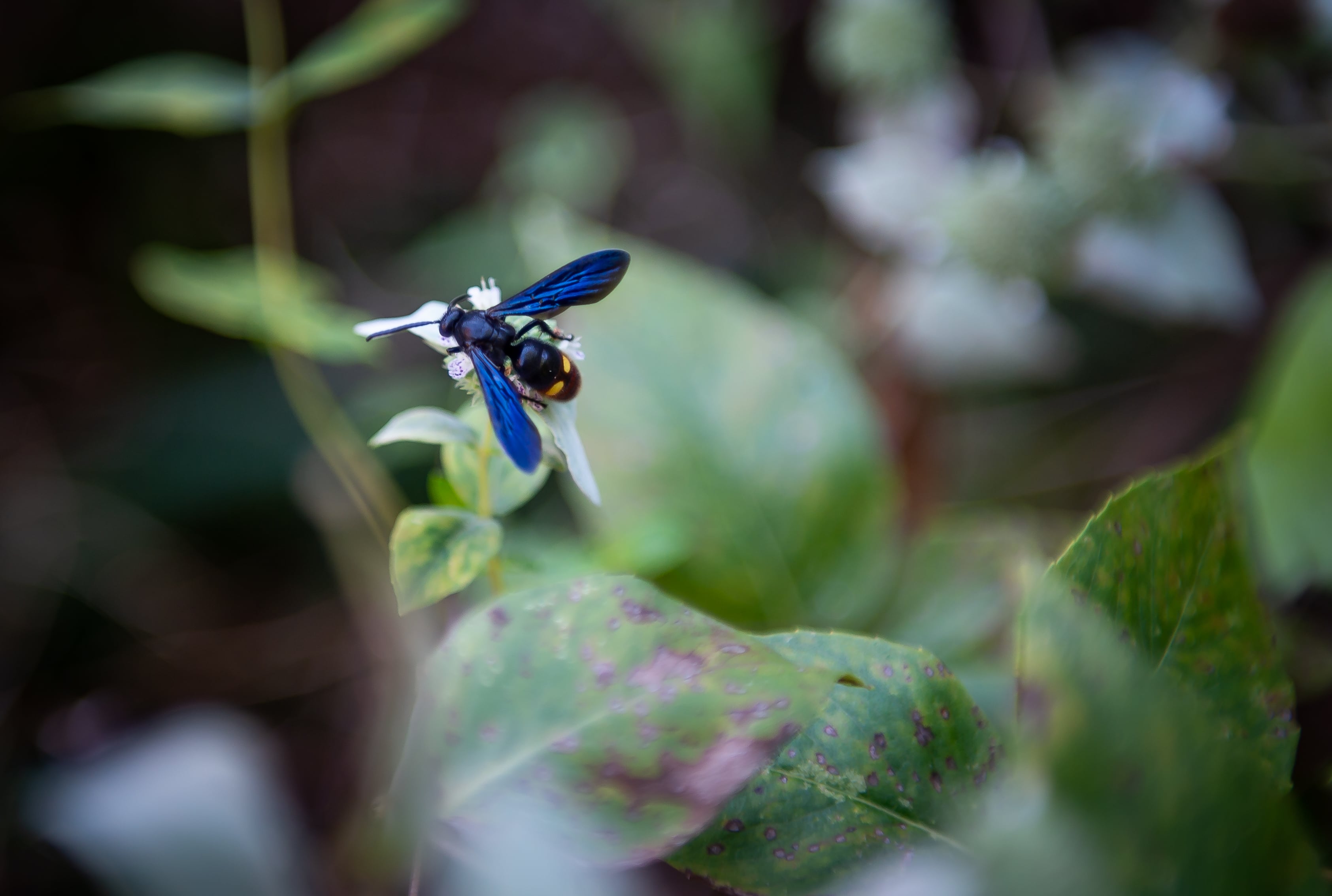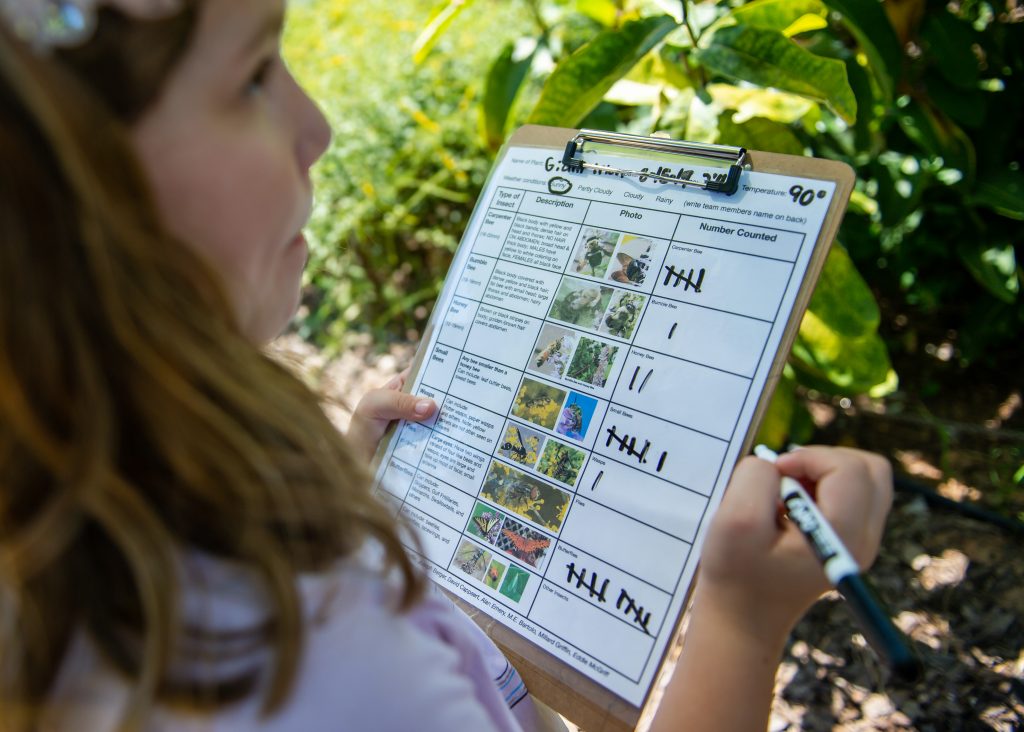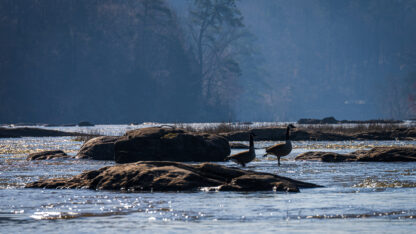Georgia’s First Pollinator Count Will Take A Census Of Bees And Butterflies

Fourth grader Norah identifies and counts pollinators: bees, wasps, butterflies and more in the pollinator garden at Oak Grove Elementary School. She and other Georgians will take part in the Great Georgia Pollinator Census on Aug. 23 and 24 in an effort to begin to document the numbers and types of pollinators in the state.
BITA HONARVAR / WABE
The Lake Claire Community Land Trust is an acre and a half of gardens and outdoor space along DeKalb Avenue in Atlanta.
In the summer, it’s a maze of okra, squash, asparagus and tomatoes. Flowers drape into paths, honeybees go about their buzzy business, and an emu named Big Lou clacks his bill in his pen.
Sara Gottlieb, on the board of the land trust, manages the 40 community garden plots. She’s been gardening here for about seven years, “and I keep an eye on what’s growing, what’s flying around,” she says.
Walking to a patch of pink-flowered plants called horsemint, Gottlieb says this year she noticed something different.
“These plants are one that bees love the most,” she says. “Normally, I just see bees everywhere, just covering it. But right now, you can see, like, there’s one bee buzzing around over there. But we have this huge clump and just one bee, so that’s really unusual.”

It’s not just the bees. She says what’s really jumped out to her this summer are the butterflies. Though gulf fritillaries flit around a vine near her home, she says there have been far fewer butterflies than usual in the garden.
Gottlieb, who works at the Nature Conservancy, cautions these are her personal observations.
“I never take my personal experience, my anecdotes as evidence that, ‘Oh my gosh, all insects are going extinct because I’m not seeing them in my garden,’” she said.
There has been a growing alarm about insects. Researchers have found evidence of insect declines in Germany and in Puerto Rico, though scientists say one study from earlier this year that basically claimed insects were facing extinction was overblown.
Still, there’s concern. So what’s going on with Georgia’s insects, from the monarch butterflies, lightning bugs and bumblebees, to the roaches, gnats and mosquitoes?
Atlanta gardeners say they’re seeing fewer butterflies and lightning bugs. But researchers don’t really know how their populations have changed here. They don’t know how most insects’ populations have changed.
The state’s first-ever pollinator census, kicking off this week, could help start to get some answers. It’s a statewide citizen science project, a count of the bees and butterflies that land on flowers in yards, parks and at schools.
The Great Georgia Pollinator
Census will take place Aug. 23-24.
To participate in the count,
find more info here.
No Baseline
Will Hudson, an entomologist with the University of Georgia extension, says it’s clear that things have changed for insects in Georgia.
Cut down a weedy clearing in a forest and replace it with a manicured lawn? That will affect insect diversity, he says. Treat that lawn with mosquito spray? “You’re not just going to kill the mosquitoes. You’re also going to kill the butterflies and bees and wasps and various and sundry other things,” he says.
Hudson says evolving practices on farms affect insects, too, like treating ditches with herbicides instead of letting the weeds grow. And human-caused climate change could be a problem for some species.
But the reason scientists like Hudson don’t know what all that has meant for insect populations is the lack of a baseline.
“We have a pretty good catalog of what insects are here – although we find new species all the time – but that doesn’t address the abundance question,” he said.

No one has gone around counting the numbers of any given insect in Georgia. So there’s no baseline. No starting point that could tell scientists how many insects there were. Without that, they can’t tell what’s changed since then.
Except for when there is a baseline.
Ogeechee River Research
Kelly Murray-Stoker, a Ph.D. student at the University of Toronto, got her master’s degree in entomology at UGA, where she had access to a rare kind of find: a survey of aquatic insects in Georgia’s Ogeechee River from about 30 years ago.
It was a study that she could go back and replicate, to compare that 1980s baseline to more recent years. (Murray-Stoker also happens to be Hudson’s stepdaughter.)
And in her study, which has not yet been published, she did find a change.
“We found that there were large declines in overall biomass of the aquatic insects,” she said.
Not declines in number of insects or number of species, but in overall mass. There were fewer of the big ones, like caddisflies.

There had been a chemical spill in the Ogeechee River in the years between the two studies, but Murray-Stoker says she thinks lower flows in the river are the likely culprit.
“It’s important,” she says, because “there’s a lot of fish that will eat the aquatic insects that we studied.”
So she says the decline in biomass could affect the size or the number of fish in the river, and on up the food chain.
That’s for one river. Murray-Stoker says a big takeaway for Georgia is the need to study more of these questions – and the importance of long-term data.
Pollinator Census
That’s where Georgia’s first-ever pollinator census comes in.
It was Becky Griffin’s idea; she’s the community and school garden coordinator for the University of Georgia extension. The census won’t answer questions about caddisflies or mosquitoes or beetles, but it’s intended to at least start tackling questions about pollinators.
“It’s really simple. Anyone can do it and it’s an historic project. So I encourage everybody to do it,” Griffin says.

On a bright, hot afternoon at Oak Grove Elementary School in DeKalb County, fourth graders Cecilia and Norah are preparing for the census.
The courtyard at their school is bursting with flowers, bees and butterflies. The after-school care students have paired off, to count pollinators as practice for the actual count. They have been practicing for weeks on insect identification.
“There’s a wasp,” says Norah, looking up at a towering purple-flowered ironweed. “And another butterfly.”
“Butterflies really like this plant,” says Cecilia, who has tallied so many of them, she says she’s running out of room on her worksheet.
This is one of around 1,000 schools around the state participating, according Griffin, from the Georgia coast to the Blue Ridge Mountains.
She says she has a few goals for the census: to encourage people to plant pollinator-friendly plants, to increase Georgians’ knowledge about insects and to get information that researchers can use in the future.
“We can’t really tell what’s going on if we don’t have a baseline,” she says.




















